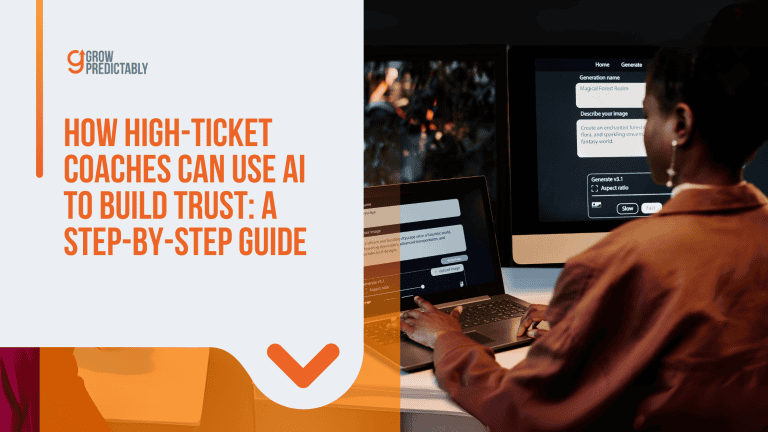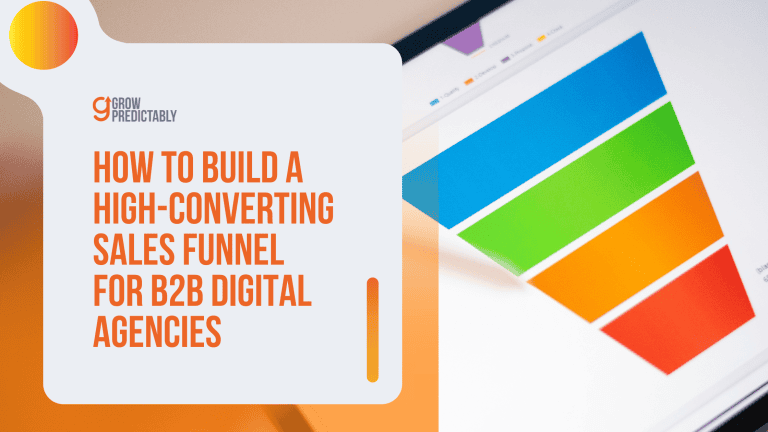How to Fine-Tune AI Models with Client Brand Assets
Agencies everywhere face the persistent headache of AI that nails grammar but misses the brand’s soul—delivering content that feels off-key and risks client trust.
The solution for how to fine-tune AI models with client brand assets is a dynamic, hands-on process: crafting powerful brand guidelines (voice, tone, visuals, messaging), curating gold-standard training data, and actively tuning models through proven methods—supervised learning, RLHF, and sharp prompt engineering.
With smart tools like Label Studio to annotate examples, Writer.com to score every line for brand fit, and Airtable to organize assets, teams create AI that sounds exactly like their client, everywhere.
The results are dramatic: slashing revision cycles, tripling client capacity, and fueling revenue growth—all with content that hits the mark every time.
Everything you need to transform AI into a true on-brand asset is right here—let’s turn your agency’s AI into your clients’ most consistent team member!
TL;DR
To fine-tune AI models effectively with client brand assets, focus on detailed brand guidelines that include voice, tone, and context. Implement structured feedback loops, maintain updated training data, and ensure ongoing AI refinement to continuously reflect evolving brand standards and align with client expectations.
KEY TAKEAWAYS
- Develop comprehensive and evolving brand guidelines that include clear examples of both on-brand and off-brand communication styles.
- Use structured QA workflows and consistent human feedback to refine AI outputs and maintain alignment with the latest brand standards.
- Regularly update AI training data to reflect current brand positioning, and set up automated processes to alert when new retraining sessions are needed.
You Need Clear Brand Guidelines To Train AI
Why can AI create flawless sentences yet still miss the mark on brand personality?
The answer lies not in the technology itself, but in how clearly we translate human brand elements into machine-readable logic.
When your AI produces content that feels “off” despite perfect grammar, you’re experiencing the gap between technical proficiency and brand fluency.
Let’s bridge that gap together by breaking down the four different elements that make up a brand guideline.
1. Brand Voice and Tone
Think of voice and tone documentation as teaching your AI the “personality” of your brand.
Without this guidance, even the smartest AI will default to generic writing.
Brand Voice Traits
Start by defining 3-5 core voice attributes.
Is your brand authoritative but approachable? Playful but professional? Cutting-edge but accessible?
These paired traits create the nuance AI needs to understand.
For example:
- “Our brand is confident without being arrogant”
- “We’re technical but never confusing”
- “We’re friendly but never casual”
Grammar Rules
Document specific preferences that distinguish your brand, which can be implemented in AI tools:
- Oxford comma: yes or no?
- Sentence fragments: acceptable or avoid?
- Contractions: encouraged or formal alternatives preferred?
Lexicon and Messaging Pillars
Create word banks that guide AI toward brand-specific language:
- Preferred terms: “solutions” vs “products”
- Prohibited phrases: “game-changing” or “revolutionary”
- Core messages that should appear consistently within the brand voice
💡 Expert Tip:
Use Grammarly Business to create team-wide tone and grammar settings to ensure consistency in brand voice.
These same settings can be exported as documentation for AI training.
2. Visual Identity Translation
You might think visuals don’t matter for text-generating AI—until you realize how deeply visual identity influences content decisions.
In fact, 50% of marketers in 2021 used visuals in over 91% of their content, according to a Venngage resource on visual content marketing. (Source)
The same number also agrees that visual content is essential to their marketing strategy.
Visual Guidelines
Document how visual elements should be referenced or described in text:
- Color references: “Use our signature blue sparingly in CTAs”
- Typography translation: “Headers should feel bold and decisive in tone”
- Layout implications: “Content should breathe with white space—keep paragraphs short”
One example of a visual guideline is a brand’s color palette.
Just like these leading brands’ color combos.

Platform Examples
Show how visual identity adapts across channels:
- Email headers vs. social media cards
- Landing page hero sections vs. blog featured images
- Mobile vs. desktop presentation differences
3. Messaging Frameworks
AI needs to understand not just how your brand speaks in terms of brand voice, but what it says consistently.
Core Messaging
Core Messaging Document your fundamental brand promises that reflect your brand identity:
- Value propositions with exact phrasing
- Taglines and how/when to use them
- Problem-solution frameworks specific to your offerings
Narrative Structure
Map how your brand tells stories:
- Do you lead with problems or solutions?
- Where do customer stories typically appear?
- What metaphors or analogies resonate with your brand world?
4. Contextual Applications
The biggest AI brand alignment failures occur when you don’t properly train AI models to adapt content to context appropriately, which can jeopardize the intended brand voice.
Channel Adaptation
Show how voice shifts subtly between platforms:
- LinkedIn: more professional, insight-driven
- Instagram: more visual, emotionally resonant
- Email: more direct, action-oriented
But of course, these are just standard starting points.
The voice you choose will still depend on the branding and the kind of audience you want to reach.
Notice how HubSpot combines professional and casual in this LinkedIn post.

On-Brand vs. Off-Brand Grid
This is where most guidelines fall short!
Create side-by-side examples showing:
- On-brand social post vs. slightly off-brand version
- Correct vs. incorrect email subject line approaches
- Appropriate vs. inappropriate use of humor or emotion
For example:
✅ “Ready to transform your workflow? Our new feature saves teams 5 hours weekly.”
❌ “Our MIND-BLOWING new feature will REVOLUTIONIZE how you work!”
Gathering Brand Information Efficiently
Building comprehensive guidelines doesn’t have to be overwhelming when supported by the right AI tools.
Try these approaches:
- Stakeholder Interviews: Ask key team members to describe the brand in their own words, noting patterns and inconsistencies (a common practice in agency life)
- Brand Workshops: Run exercises where teams identify voice attributes, messaging pillars, and on/off-brand examples
- Content Audits: Use AI tools like Frontify to organize existing assets and identify what resonates
- Living Documentation: Create a Notion or Google Doc that evolves as the brand does
✅ Brand Documentation Checklist:
- [ ] Voice defined by core traits and grammar norms
- [ ] Visual assets mapped to platforms
- [ ] Clear messaging pillars and tone rules
- [ ] Examples of both on-brand and off-brand executions
- [ ] Easily editable living doc shared with stakeholder team
Key Takeaways
A detailed brand guideline isn’t just documentation—it’s the blueprint that determines whether your AI becomes a brand champion or a generic content machine.
By thoroughly addressing voice, visuals, messaging, and contextual applications, you create a comprehensive training foundation that AI can learn from and be evaluated against.
The most successful AI brand implementations start with examples that clarify what is and isn’t on-brand—because AI learns best from contrast.
And remember: brand guidelines should be living documents.
As your brand evolves, so should the models you train AI models with in your training materials.
The brands that win with AI are those that foster ongoing collaboration between client teams and AI systems.
Watch for our next section on preparing and curating brand-specific training data, where we’ll explore why feeding your AI outdated content creates models that mirror yesterday’s brand instead of today’s vision.
How to Prepare Your Client’s Brand-Specific Training Data
Why can AI create flawless sentences yet still sound nothing like your client?
The answer often lies in what you feed it.
Imagine training a chef using recipes from the wrong restaurant—you’d get technically perfect dishes that completely miss the mark on flavor.
This is similar to how misplaced client data could affect AI training.
Before your AI can truly embody a brand voice, you need to provide it with the right examples to train AI models effectively.

Let’s walk through how to collect, clean, and prepare data that will help your AI sound authentically on-brand for your clients.
1. Identify Brand-Compliant Content Sources
Your AI’s understanding of brand voice starts with carefully selected examples to train AI models accurately and effectively.
Reliable Inputs
Start by gathering content that perfectly represents the current brand voice:
- Recent blog posts (especially those that received positive feedback)
- Successful ad campaigns
- Visual assets with accompanying copy
- Customer service transcripts that earned praise
- Email campaigns with high engagement rates
Version Control
One common mistake? Using outdated brand materials.
Make sure all content reflects the most recent guidelines—that rebrand from six months ago means older content might teach your AI the wrong lessons about generating AI generated content for your clients.
2. Filter Outdated or Inconsistent Content
Not all content created under your brand name deserves to train your AI, especially outdated ones.
As a rule of thumb, its always a best practice—and also a precautionary measure—to only include data that is clean and up to date in training modules.
According to a Zipdo 2025 Report on data quality, inaccurate data leads to an average of 12% loss in revenue for organizations. (Source)
Quality Gatekeeping
This step is crucial—remove anything that doesn’t align with current voice and tone standards. That viral tweet from 2019 might have performed well, but if it doesn’t match today’s brand personality, it’ll only confuse your model.
Audit for Alignment
Tools like Writer.com’s AI brand scoring feature can help flag content that strays from your guidelines. Run your potential training content through these tools to identify outliers before they contaminate your dataset.
3. Convert and Tag Data for Easy Machine Readability
AI needs structured data to learn effectively:
Standard Formats
Transform your content into machine-friendly formats like JSON or CSV files.
EXAMPLE
{
“content_type”: “blog_post”,
“audience”: “technical_professionals”,
“tone”: “informative_with_light_humor”,
“text”: “Your actual content here…”,
“compliance_level”: “high”
}
Metadata Tagging
Don’t just include the content itself—tag everything with relevant context:
- Target audience segment
- Channel (email, social, website)
- Voice tone indicators (formal, conversational, technical)
- Compliance level (fully approved, needs review)
This context helps your AI understand when and where different tones are appropriate.
4. Annotate with Clear Labels
Here’s where many teams go wrong—they only show the AI what “good” looks like:
On-Brand vs. Off-Brand
You need to explicitly mark examples of both on-brand and off-brand content. Why? Because contrast teaches nuance. Your AI needs to understand not just what to do, but what to avoid.
COMMON MISSTEP
Teams often skip labeling off-brand examples—but they’re crucial for contrast learning. Without seeing what “wrong” looks like, your AI can’t fully grasp the boundaries of your brand voice.
Use Human Annotators or Tools
Label Studio offers a visual interface for annotating content by category or tone.
This makes it easier to create training pairs showing the right and wrong approaches to the same message.
5. Diversify Data Across Channels
Your brand likely speaks differently across platforms:
Omnichannel Approach
Include examples from every channel where your brand appears:
- Email newsletters and campaigns
- Print materials (transcribed)
- Social media posts (segmented by platform)
- Customer support scripts
- Website copy
- Video transcripts or audio if they contribute to verbal tone training
The way you speak on TikTok probably differs from your LinkedIn voice—make sure your AI understands these contextual shifts.
Suggested AI Tools:
- Label Studio: Perfect for customizable annotation across multiple data types
- Writer.com: Get AI-driven brand scoring for textual content
- Airtable: Ideal for tagging, storing, and referencing multi-format assets in one place
Key Takeaways:
- The quality of your training data directly determines how well your AI will represent your brand. Garbage in, garbage out—but curated gold in? Brand-perfect content out.
- Taking time to properly annotate and tag content pays off in AI that understands context and nuance.
- The right tools make this process manageable, letting you focus on selecting truly representative content.
Remember, the work you do at this stage sets the foundation for everything that follows.
When you move on to fine-tuning your model using AI tools, you’ll be grateful for every hour spent curating clean, well-structured training data that truly captures your brand’s unique voice.
How To Train AI Models for Brand Alignment
Have you ever wondered why some AI models sound like perfect strangers even with brand data?
It’s like giving someone your business card but they still call you by the wrong name.
The disconnect happens when we skip the crucial teaching phase.
Your AI model is only as good as its training plan.
Even with perfect data, an off-the-shelf model won’t “know” your client’s personality unless you teach it properly, allowing it to function as a creative co pilot.
Great job, you’ve identified the gap, now let’s fix it!
Think of fine-tuning like teaching a jazz musician to solo in your brand’s “key”—you don’t script every note, but you provide the scales, rhythm patterns, and musical context that make their improvisation sound authentically on brand.
This is something your marketing team will have to focus on.
1. Choose the Right AI Platform

The foundation of your brand alignment starts with picking the right stage for your AI to perform on:
Platform Match
When deciding between platforms like GPT (OpenAI) and Hugging Face, consider three key factors:
- Budget constraints (some platforms charge per token processed)
- How much customization control you need
- Whether you have direct fine-tuning access
Compatibility
As of 2024, OpenAI offers fine-tuning for GPT-3.5 only, while Hugging Face supports a wider range of model customization options.
This distinction matters when your brand needs specific personality traits that require deep model adjustments.
2. Fine-Tuning Techniques
Once you’ve selected your platform, you’ll need to choose how to teach your AI:
Supervised Learning
Train AI models with labeled brand examples—this is like showing your AI “this is us” and “this isn’t us” repeatedly until it gets the pattern.
RLHF (Reinforcement Learning with Human Feedback)
This approach guides the model with human-approved outputs—perfect for tone-sensitive brands where nuance matters.
Your team rates AI outputs, and the model learns from this feedback.
Prompt Engineering
Design reusable prompt templates that nudge AI toward on-brand writing.
EXAMPLE
You are writing as [Brand]. Your tone is [formal/casual/witty]. Always emphasize our core values of [X, Y, Z]. Never use [banned phrases].
3. Feed Curated Brand Data into Models
Remember all that work you did gathering and labeling content?
Now it’s time to put it to use:
Upload Annotated Sets
Include labeled metadata and tone indicators so the AI understands the context of each example (social media requires different tone than white papers).
Parameter Tweaks
Adjust settings like:
- Temperature (higher = more creative, lower = more predictable)
- Max tokens (controls verbosity)
- Stop sequences (prevents rambling)
These small adjustments can dramatically influence whether your AI sounds formal or conversational, brief or detailed.
4. Iterative Training with Human-in-the-Loop Feedback
Even the best initial training needs refinement.
Your brand voice will evolve and improve with feedback:
Step-by-Step Refinement
Use QA reviewers or tools like Galileo or Humanloop to validate outputs and flag anything off-brand.
Each correction teaches the system, ensuring your brand maintains a competitive edge.
Live Testing
Run campaigns with hybrid AI/human creatives and analyze performance across versions.
Which emails got better open rates? Which social media posts earned more engagement?
This real-world data helps fine-tune what “good” means for your brand.
Our jazz musician analogy comes full circle here—after learning the scales and chord progressions, the AI now plays with the band, getting real-time feedback from other musicians and the audience.
Key Takeaways:
- Customizing AI requires selecting the right platform and using techniques like fine-tuning and prompt engineering to teach brand voice effectively, ensuring alignment with your core brand values.
- Feeding in annotated brand data ensures models reflect brand values and voice—the quality of your training examples directly impacts output quality.
- Human-in-the-loop feedback fine-tunes output quality and compliance over time, creating a learning system that gets smarter with each interaction.
Remember, the work you did preparing and curating your brand data will pay off tremendously during this fine-tuning phase.
And once you’ve got your model aligned, you’ll need to implement the monitoring systems we’ll discuss next to keep everything on track as your brand evolves.
What You Must Avoid When Training AI for Client Branding
Imagine this scenario: your AI suddenly recommends emojis in a regulated banking email. What went wrong?
This question isn’t just hypothetical—it represents the kind of brand alignment failures that happen when AI training misses critical guardrails.
Even the most carefully documented brands can stumble when training AI.
The gap between what we think we’ve taught our AI systems and what they actually produce can be surprising—and sometimes embarrassing.
Let’s explore these hidden traps and how to sidestep them.
| Pitfall | Description | Fix |
|---|---|---|
| Incomplete Brand Guidelines | Your brand guide beautifully details logo spacing and color hex codes but barely mentions voice characteristics or content boundaries. Many organizations invest heavily in visual identity documentation while treating tone and messaging as afterthoughts. | – Expand guidelines to include specific tone examples, channel-specific context, and clear voice rules using real-world samples. – Create a “tone spectrum” showing how your brand voice adapts across different situations (formal announcements vs. casual social posts) with concrete examples for each. – Include “do this, not that” pairs showing on-brand versus off-brand phrasings for common scenarios. |
| Overreliance on AI | Assuming that once trained, AI will maintain perfect brand alignment without oversight. AI systems can drift over time or misapply learned patterns in new contexts. Without regular human review, small inconsistencies can compound into significant brand voice problems. | – Implement structured QA workflows with human reviewers who understand brand nuances. – Design a tiered review system where high-visibility content always receives human oversight, while routine content follows an automated review path with random sampling. – Schedule regular retraining sessions to incorporate feedback from these reviews. |
| Data Quality Issues | Training AI on outdated or inconsistent brand examples creates confusion about current standards. When your training data includes content from multiple brand eras or inconsistently applied guidelines, the AI learns these contradictions, resulting in unpredictable outputs. | – Conduct quarterly audits of your brand corpus and remove or relabel outdated examples. – Create a “recency score” for training data, prioritizing newer examples that reflect current brand positioning. – Tag content with version information so you can trace AI outputs back to specific training inputs when troubleshooting inconsistencies. |
| Neglecting Updates | Your AI still follows a 2022 brand voice even though you completed a major rebrand six months ago. Your brand identity evolves, but AI training often doesn’t keep pace, resulting in a time capsule of old messaging rather than reflecting your current brand identity. | – Develop automated workflows that flag when brand guidelines change and trigger retraining cycles to keep AI generated content aligned with current standards. – Create a brand calendar that schedules regular reviews of AI outputs against current guidelines. – After any brand refresh, immediately update your training data and run comparison tests between old and new AI outputs to verify alignment. |
| Overpromising Results | Setting unrealistic client expectations about AI’s ability to capture brand subtleties can lead to disappointment. AI excels at pattern recognition but may struggle with nuances like humor, cultural sensitivity, or emotional intelligence. | – Frame AI as a brand amplifier that works alongside human creativity, not a replacement for brand strategy. – Create case studies showing realistic examples of AI-human collaboration, highlighting where each excels. – Set clear expectations about what types of content benefit most from AI assistance versus which need more human touch. |
Remember that brand-aligned AI isn’t a one-time setup but an ongoing relationship.
The most successful implementations treat AI as a junior team member who needs regular coaching—not a set-and-forget solution.
By anticipating these common pitfalls, you’ll create AI systems that truly speak your brand’s language.
FAQs
From Documentation to Deployment—Bringing It All Together
Why can perfectly documented brand guidelines still lead to AI content that feels robotic or off-key?
The answer lies in seeing brand-AI alignment not as a one-time setup but as a living system.
When a brand-trained AI system works flawlessly—revamping campaigns without manual re-editing—it’s because every upstream step was executed with precision.
The magic happens when all pieces work together in harmony.
Full Lifecycle Recap
Think of brand-AI alignment like teaching a new team member your client’s unique voice:
- Document your client’s brand in full – capture not just visual elements but the soul of their communication: voice traits, grammar preferences, and contextual shifts across platforms. This foundation in your brand voice determines everything that follows.
- Curate and tag data for clarity and consistency – remember our jazz musician analogy? You’re providing the scales and chord progressions your AI needs to improvise confidently within your brand’s key. Clean, current, and properly tagged content creates that musical framework.
- Fine-tune AI models using the method that fits your needs – whether supervised learning with examples, prompt engineering for specific outputs, or human feedback loops for continuous improvement.
- Deploy with automation, safeguards, and KPIs – this is where many teams drop the ball! A social media manager should ensure that the right monitoring systems are in place to catch that “LOL 😜” before it reaches your investment banking clients, even the best training falls apart.
- Refine over time with QA reviews and updated brand inputs – brands evolve, and your AI training must evolve with them. Regular audits keep everything in sync.
Each step builds on the last.
Skip one, and you’ll find yourself wondering why your AI keeps suggesting emojis in formal communications or writing paragraphs when your brand speaks in punchy one-liners.
Start Driving Results
You’ve learned the framework—now put it into action:
- Download our Brand AI Readiness Template—this worksheet walks you through documenting voice traits, visual guidelines, and messaging frameworks in a format AI can learn from.
- Schedule a brand AI workshop with clients—bring stakeholders together to define what makes their brand unique and how AI can amplify (not replace) that uniqueness.
- Create “before & after” mockups—show clients the difference between generic AI content and brand-trained AI outputs.
Nothing sells the process like seeing results side by side.
The journey from documentation to deployment isn’t linear—it’s cyclical.
As you gather feedback on AI outputs, you’ll refine your guidelines.
As guidelines evolve, you’ll update your training data, ensuring your brand maintains its competitive edge.
This continuous improvement loop is what separates good AI content from great AI content.
Start building your AI-ready brand guidelines today—and help your AI become your client’s most consistent team member in this fast-evolving AI world.
Remember the banking email with inappropriate emojis we mentioned earlier?
That happens when teams skip steps in this process.
But when you follow the full lifecycle—documenting thoroughly, curating carefully, fine-tuning intentionally, automating wisely, and refining continuously—you create a system where AI enhances your brand rather than diluting it.
Your brand has a unique personality.
With the right approach, your AI can learn to speak in that voice—not as an impersonator, but as a fluent extension of your client’s communication style.








